Cool roofing is a smart choice for energy-efficient homes because it reflects more sunlight and absorbs less heat than traditional roofing. You'll benefit from lower energy bills, with potential savings of 7-15% annually on cooling costs. Your home's interior will stay more comfortable, up to 7°F cooler, reducing strain on your HVAC system. Cool roofs also last longer, resisting UV damage and thermal cycling. They contribute to sustainability by mitigating urban heat and improving air quality. With various materials available and potential incentives, cool roofing offers both immediate and long-term advantages. Discover how this technology can transform your home's efficiency and comfort.
Understanding Cool Roofing Technology

Cool roofing technology has taken off in recent years as homeowners look for ways to reduce energy costs and environmental impact. At its core, cool roofing uses materials designed to reflect more sunlight and absorb less heat than traditional roofing. These materials typically have higher solar reflectance and thermal emittance properties.
You'll find cool roofs in various forms, including specially coated metal, tiles, and shingles. Some use light-colored surfaces, while others incorporate special pigments that reflect infrared radiation. The key is their ability to stay cooler than conventional roofs under direct sunlight.
When you opt for cool roofing, you're fundamentally adding a protective layer that shields your home from excessive heat gain. This can lead to significant reductions in your cooling costs, especially during hot summer months.
It's not just about savings, though. Cool roofs also help mitigate the urban heat island effect, reducing overall temperatures in densely populated areas.
To determine a roof's cooling efficiency, look for its Solar Reflectance Index (SRI). The higher the SRI, the more effective the material is at reflecting sunlight and releasing absorbed heat.
Benefits of Cool Roofs
You'll find that cool roofs offer several compelling advantages for your home.
They'll greatly reduce your energy costs by keeping your house cooler, while also extending your roof's lifespan by minimizing temperature fluctuations and UV damage.
Additionally, cool roofs contribute to reducing urban heat island effects, making your neighborhood more comfortable and environmentally friendly.
Lower Energy Costs
One of the most significant benefits of cool roofs is their ability to dramatically reduce energy costs. By reflecting more sunlight and absorbing less heat than traditional roofs, cool roofs keep your home's interior temperature lower. This means you'll rely less on air conditioning during hot summer months, leading to substantial savings on your electricity bills.
You'll notice the difference immediately, as your AC won't need to work as hard to maintain a comfortable temperature. In fact, studies have shown that cool roofs can reduce peak cooling demand by up to 15%. This reduction translates to lower energy consumption and decreased strain on your HVAC system, potentially extending its lifespan.
The energy savings aren't limited to summer, either. Cool roofs can help regulate your home's temperature year-round, reducing the need for heating in cooler months.
Over time, these accumulated savings can offset the initial installation costs of a cool roof. Additionally, many utility companies offer rebates or incentives for energy-efficient upgrades, including cool roofing, which can further reduce your overall expenses and increase your long-term savings.
Extended Roof Lifespan
Beyond the immediate energy savings, you'll appreciate the extended lifespan that cool roofs offer. Traditional dark roofing materials absorb more heat, causing them to expand and contract with temperature fluctuations. This constant stress leads to faster deterioration and more frequent replacements.
In contrast, cool roofs reflect more sunlight and heat, reducing thermal cycling and slowing down wear and tear. You'll find that cool roofing materials are more resistant to UV damage, which is a primary cause of roof degradation. By reflecting harmful rays, these roofs maintain their structural integrity for longer periods.
Additionally, cool roofs help prevent moisture damage by reducing temperature differences between your attic and the outside air, minimizing condensation issues. The extended lifespan of cool roofs translates to significant long-term cost savings for you.
You'll spend less on maintenance and enjoy a longer interval between roof replacements. This durability also contributes to reduced waste in landfills, as you won't need to dispose of roofing materials as frequently. By choosing a cool roof, you're not only investing in your home's immediate energy efficiency but also in its long-term sustainability and value.
Reduced Urban Heat
Cool roofs don't just benefit individual homeowners; they play a notable role in combating the urban heat island effect. When you opt for a cool roof, you're contributing to a citywide effort to lower ambient temperatures.
Urban areas tend to be notably warmer than surrounding rural regions due to the concentration of heat-absorbing surfaces like dark roofs, roads, and buildings. By reflecting more sunlight and absorbing less heat, cool roofs help reduce the overall temperature of your neighborhood.
This collective cooling effect can lead to improved air quality, as lower temperatures slow the formation of smog. You'll also notice a decrease in energy demand for air conditioning across the community, which can help prevent power outages during heat waves.
Cool roofs can lower urban air temperatures by up to 5°F, creating a more comfortable environment for everyone. This reduction in temperature can be particularly beneficial for vulnerable populations, such as the elderly or those with respiratory conditions.
Energy Savings and Cost Reduction
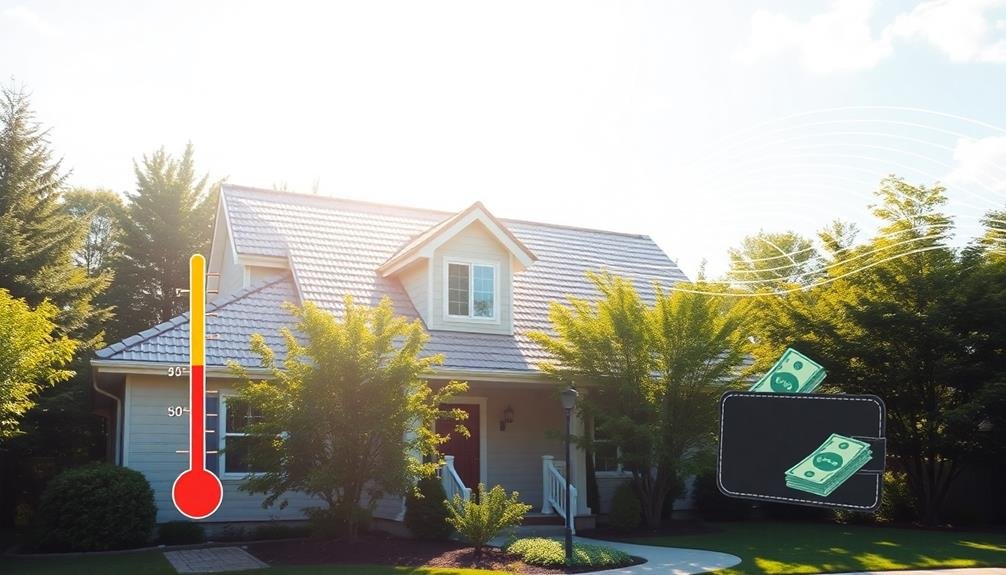
How much can cool roofing actually save you on energy costs? The answer might surprise you. Cool roofs can reduce your energy bills by 7-15% annually, with some homeowners reporting even higher savings. These reflective roofs minimize heat absorption, keeping your home cooler and reducing the need for air conditioning.
You'll notice the biggest impact during peak summer months when your AC typically works overtime. By lowering your home's internal temperature by up to 7°F, cool roofs ease the strain on your cooling system. This not only cuts energy consumption but also extends the lifespan of your HVAC equipment, saving you money on maintenance and replacements.
While the initial installation cost might be slightly higher than traditional roofing, you'll recoup this investment through long-term energy savings. Additionally, many utility companies and local governments offer rebates or tax incentives for installing cool roofs, further offsetting your costs.
Over time, you'll find that cool roofing pays for itself through reduced energy bills and increased home value. It's a smart investment that keeps on giving, both financially and environmentally.
Improved Indoor Comfort
Your home's comfort is greatly enhanced with cool roofing. By reflecting more sunlight and absorbing less heat, cool roofs considerably reduce the temperature inside your house, especially during hot summer months.
You'll notice a substantial difference in the upper floors and attic spaces, which are typically the hottest areas of your home.
Cool roofing improves indoor comfort in several ways:
- Reduces the need for air conditioning, allowing you to maintain a comfortable temperature with less energy consumption.
- Minimizes temperature fluctuations throughout the day, creating a more stable indoor environment.
- Lowers humidity levels inside your home, making the air feel less stuffy and more breathable.
With a cool roof, you'll find yourself relying less on fans and air conditioning to stay comfortable. This not only saves energy but also creates a more pleasant living space.
You'll be able to enjoy your home without constantly adjusting the thermostat or feeling uncomfortable due to excessive heat.
Additionally, cool roofing can help extend the life of your air conditioning system by reducing its workload, potentially saving you money on maintenance and replacements in the long run.
Extended Roof Lifespan
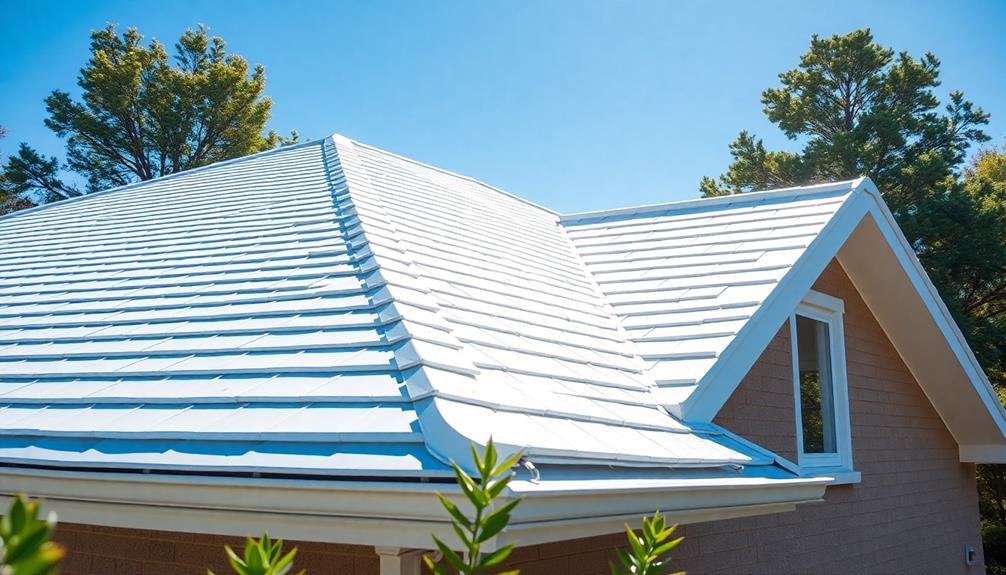
Beyond improving your home's comfort, cool roofing also extends the lifespan of your roof. Traditional roofing materials absorb heat, causing thermal expansion and contraction that leads to deterioration over time. Cool roofing reflects more sunlight and heat, reducing this thermal stress on your roof's structure.
You'll experience fewer repairs and replacements with a cool roof. The reflective surface protects against UV radiation, which can break down roofing materials. This protection is especially beneficial for asphalt shingles, which are prone to cracking and curling under intense heat.
Here's a comparison of cool roofing benefits for roof lifespan:
| Factor | Traditional Roof | Cool Roof |
|---|---|---|
| UV Damage | High | Low |
| Thermal Stress | Significant | Minimal |
| Moisture Damage | More likely | Less likely |
| Expected Lifespan | Shorter | Longer |
Environmental Impact and Sustainability
Cool roofing greatly reduces your home's environmental footprint. By reflecting more sunlight and absorbing less heat, cool roofs help mitigate the urban heat island effect, which occurs when cities become notably warmer than surrounding rural areas.
This phenomenon can lead to increased energy consumption, air pollution, and heat-related illnesses.
When you choose cool roofing, you're actively contributing to a more sustainable future. These roofs reduce the need for air conditioning, lowering your energy consumption and associated greenhouse gas emissions.
Additionally, cool roofs can help extend the life of your HVAC system, reducing the frequency of replacements and the associated waste.
Cool roofing materials are often made from recycled content and can be recycled at the end of their lifespan, further reducing their environmental impact.
Here are three key sustainability benefits of cool roofing:
- Reduced energy consumption and lower carbon emissions
- Improved air quality in urban areas
- Decreased landfill waste through recyclable materials
Cool Roof Materials and Options

When considering cool roof materials, you'll find several effective options to enhance your home's energy efficiency.
Reflective roofing coatings can be applied to existing roofs, while light-colored shingles offer a more traditional look with improved heat reflection.
For a durable and highly reflective solution, you might opt for metal roofing, which comes in various styles and colors designed to maximize solar reflectance.
Reflective Roofing Coatings
Reflective roofing coatings stand out among the various cool roof materials and options available for homeowners. These coatings are applied directly to your existing roof, transforming it into a highly reflective surface that repels solar heat. You'll find they're an excellent choice for retrofitting older roofs or enhancing the performance of new ones.
When considering reflective roofing coatings, keep these key points in mind:
- Versatility: They can be applied to various roof types, including metal, asphalt, and single-ply membranes.
- Cost-effectiveness: Coatings are often less expensive than full roof replacements and can extend your roof's lifespan.
- Easy application: Many coatings can be rolled or sprayed on, making installation quick and straightforward.
You'll typically encounter two main types of reflective coatings: white elastomeric coatings and aluminum-pigmented coatings.
White elastomeric coatings offer superior reflectivity and are ideal for warmer climates. Aluminum-pigmented coatings provide good reflectivity and are more suitable for cooler regions.
When properly applied and maintained, these coatings can considerably reduce your home's cooling costs and improve overall energy efficiency.
Light-Colored Shingles
While traditional dark shingles absorb heat, light-colored shingles offer a cooler alternative for your roof. These shingles reflect more sunlight, reducing heat absorption and lowering your home's cooling costs. You'll find a wide range of light hues available, including whites, beiges, and pale grays.
Light-colored shingles aren't just about energy efficiency; they're also durable and can last as long as their darker counterparts. They're made from materials like asphalt, metal, or concrete, each with its own benefits.
Asphalt shingles are cost-effective and easy to install, while metal and concrete options offer superior longevity.
When choosing light-colored shingles, look for those with high solar reflectance and thermal emittance ratings. These properties indicate how well the shingles reflect sunlight and release absorbed heat.
You'll also want to take into account your local climate and building codes, as some areas may have specific requirements for cool roofing materials.
Metal Roofing Options
Metal roofing stands out as another excellent cool roof option, offering both durability and energy efficiency. It's available in various materials, including steel, aluminum, and copper, each with unique properties that contribute to energy savings.
These metal roofs can reflect up to 70% of the sun's rays, considerably reducing heat absorption and lowering cooling costs.
When considering metal roofing for your cool roof project, you'll find several options:
- Standing seam metal roofs: These feature raised seams that run vertically along the roof, providing a sleek, modern look and excellent water resistance.
- Metal shingles: Designed to mimic traditional shingles, these offer the benefits of metal roofing with a more conventional appearance.
- Stone-coated metal tiles: These combine the durability of metal with the aesthetic appeal of stone, offering a unique blend of style and functionality.
Metal roofs can be coated with special reflective pigments to enhance their cool roof properties. These coatings come in a wide range of colors, allowing you to choose an option that complements your home's style while maximizing energy efficiency.
You'll also appreciate the longevity of metal roofing, which can last up to 50 years or more with proper maintenance.
Installation Process and Considerations
Installing a cool roof requires careful planning and execution. You'll need to take into account factors like your local climate, building codes, and the structural integrity of your home. Start by evaluating your current roof's condition and deciding whether a complete replacement or retrofitting is necessary.
When selecting materials, choose those with high solar reflectance and thermal emittance ratings. Consult with a professional to guarantee proper installation techniques are used, as improper application can reduce the roof's effectiveness and lifespan.
Here's a quick overview of the installation process:
| Step | Action | Considerations |
|---|---|---|
| 1 | Roof inspection | Check for damage, leaks |
| 2 | Material selection | Climate, budget, aesthetics |
| 3 | Preparation | Remove old roofing, repair deck |
| 4 | Installation | Follow manufacturer guidelines |
Remember to schedule your installation during dry weather conditions. You'll also need to maintain your cool roof regularly to preserve its energy-saving properties. This includes cleaning, recoating when necessary, and addressing any damage promptly.
Maintenance and Long-Term Performance

You'll find that cool roofs are remarkably easy to maintain, often requiring just a simple wash with water and mild detergent to keep them clean and effective.
Their durability against harsh weather conditions, including UV radiation and temperature fluctuations, guarantees long-lasting performance.
Regular inspections and prompt repairs of any minor damage will help preserve your cool roof's energy-saving properties for years to come.
Easy Cleaning Procedures
Simplicity is key when it comes to maintaining cool roofing systems. You'll find that keeping your cool roof clean is a straightforward process that doesn't require specialized knowledge or equipment. Regular cleaning helps maintain the roof's reflective properties, ensuring peak energy efficiency and longevity.
To clean your cool roof effectively, follow these easy steps:
- Inspect the roof for debris and remove any loose items by hand or with a leaf blower.
- Use a soft-bristled brush or low-pressure washer to gently remove dirt and stains.
- Apply a mild detergent solution for stubborn grime, then rinse thoroughly with clean water.
It's best to clean your cool roof at least once a year, preferably in spring or fall when temperatures are moderate.
You'll want to avoid harsh chemicals or abrasive tools that could damage the roof's surface. If you're not comfortable cleaning the roof yourself, don't hesitate to hire a professional. They'll have the right equipment and expertise to clean your cool roof safely and effectively.
Durability Against Weather Elements
Cool roofing systems are designed to withstand various weather elements, ensuring long-term performance and minimal maintenance.
You'll find that these roofs are highly resistant to UV radiation, which can cause traditional roofing materials to deteriorate over time. The reflective properties of cool roofs not only reduce heat absorption but also protect the underlying materials from sun damage.
When it comes to rain and moisture, cool roofs often incorporate water-resistant membranes or coatings. This feature helps prevent leaks and water damage, extending the roof's lifespan.
Additionally, many cool roofing materials are engineered to resist wind uplift, making them more resilient during storms and high-wind events.
Temperature fluctuations can cause roofing materials to expand and contract, leading to cracks and other damage. Cool roofs are typically made of materials that can better withstand these thermal cycles, reducing the risk of premature aging.
Some cool roofing options also offer enhanced resistance to algae and mold growth, which can be particularly beneficial in humid climates.
Regulations and Incentives
Government policymakers have recognized the energy-saving potential of cool roofing, leading to a surge in regulations and incentives across various regions.
You'll find that many cities and states now require cool roofing materials for new construction or major renovations, especially in warmer climates. These regulations often specify minimum solar reflectance and thermal emittance values for roofing products.
As a homeowner, you can benefit from various incentives designed to encourage the adoption of cool roofing. These may include:
- Tax credits or deductions for installing cool roofing systems
- Rebates or grants from utility companies or local governments
- Expedited permit processes for projects incorporating cool roofing
To take advantage of these incentives, you'll need to verify your cool roofing materials meet specific performance criteria.
It's important to research local regulations and available incentives before starting your roofing project. By complying with regulations and leveraging incentives, you can maximize the benefits of cool roofing while minimizing costs.
Remember that regulations and incentives may change over time, so staying informed about current requirements and opportunities is vital for making the most of your cool roofing investment.
Cool Roofs vs. Traditional Roofing
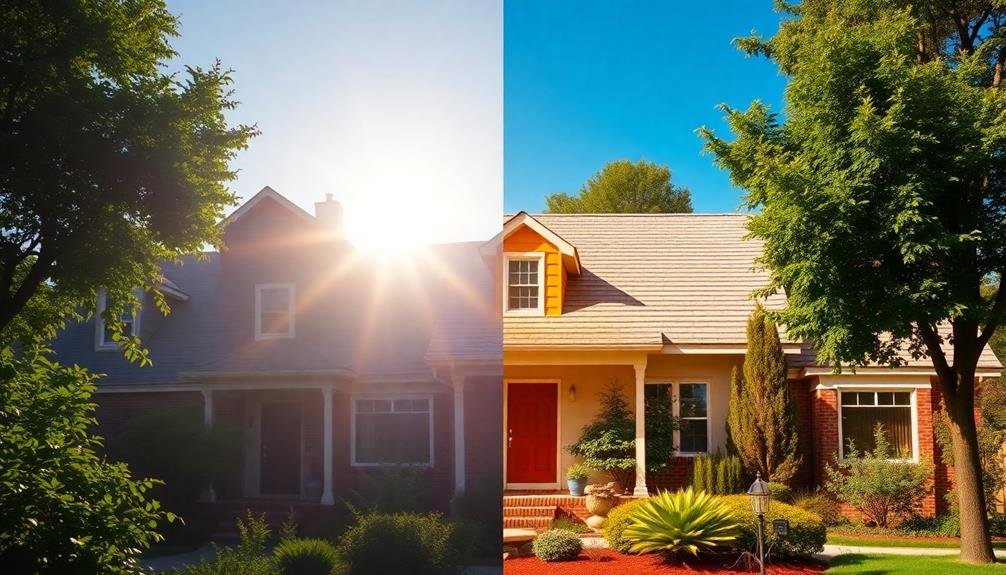
Understanding the differences between cool roofs and traditional roofing is key to making an informed decision for your home. Cool roofs are designed to reflect more sunlight and absorb less heat than standard roofs, while traditional roofing materials often absorb and retain heat. This fundamental difference impacts your home's energy efficiency and comfort.
Here's a comparison of cool roofs and traditional roofing:
| Feature | Cool Roofs | Traditional Roofing |
|---|---|---|
| Heat Absorption | Low | High |
| Energy Efficiency | High | Lower |
| Lifespan | Often longer | Variable |
Cool roofs can greatly reduce your cooling costs, especially in hot climates. They help maintain lower indoor temperatures, reducing the strain on your air conditioning system. Additionally, cool roofs can mitigate the urban heat island effect, contributing to a more comfortable outdoor environment.
Traditional roofing, while familiar and often less expensive upfront, may lead to higher energy bills and increased wear on your HVAC system. However, they can be advantageous in colder climates where heat absorption is beneficial. When choosing between cool roofs and traditional roofing, consider your local climate, energy costs, and long-term savings potential.
Climate Considerations for Cool Roofs
Climate plays an essential role in determining the effectiveness of cool roofs. When considering a cool roof for your home, you'll need to factor in your local climate conditions. Cool roofs are most beneficial in hot, sunny climates where cooling demands are high. In these areas, they can considerably reduce your energy consumption and costs.
However, cool roofs aren't universally advantageous. In colder climates, the reflective properties of cool roofs might increase heating costs during winter months. This phenomenon is known as the "winter heating penalty."
To determine if a cool roof is right for your home, consider these climate-related factors:
- Annual sunshine hours
- Average summer temperatures
- Length and severity of winter seasons
If you live in a mixed climate with both hot summers and cold winters, you'll need to weigh the cooling benefits against potential heating drawbacks. In some cases, a "warm roof" design might be more suitable, combining insulation with reflective properties to balance year-round energy efficiency.
Consult with a roofing professional to assess your specific climate needs and determine the most energy-efficient roofing solution for your home.
Future of Cool Roofing Technology
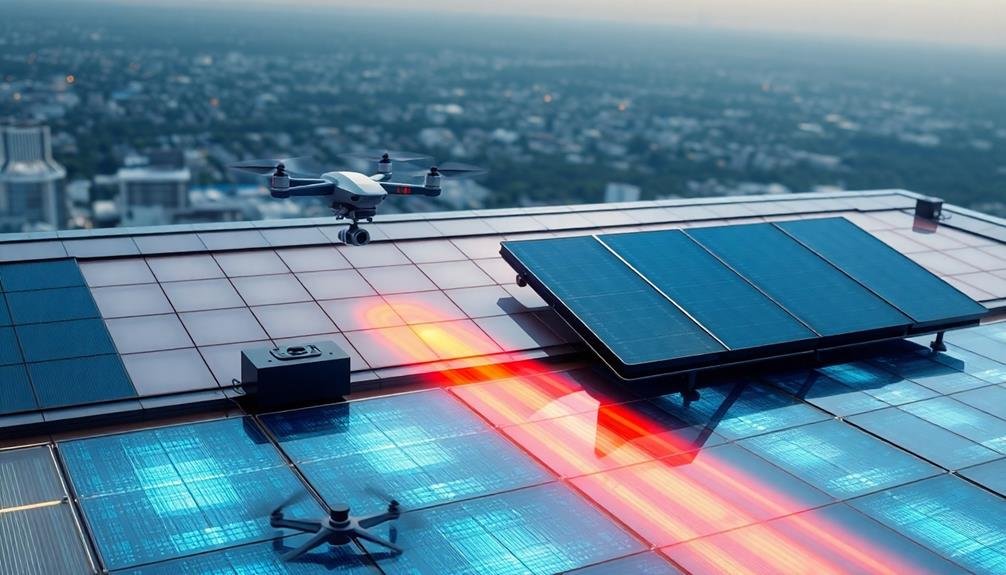
Cool roofing technology is rapidly evolving, with three key trends shaping its future.
First, you'll see advanced materials with even higher solar reflectance and thermal emittance. These next-gen cool roofs will outperform current options, keeping your home cooler and reducing energy costs further.
Second, expect smart cool roofing systems that adapt to changing weather conditions. These roofs will utilize sensors and automated controls to optimize their performance, adjusting reflectivity or even changing color based on temperature and sunlight intensity.
Lastly, you'll witness the integration of cool roofing with renewable energy technologies. Imagine a roof that not only reflects heat but also generates electricity through built-in solar cells or harvests rainwater for household use.
As research progresses, you'll also benefit from improved durability and longevity in cool roofing materials. Scientists are working on self-cleaning and self-repairing surfaces that maintain high reflectivity over time, ensuring your roof's energy-saving properties last longer.
With these advancements, you'll be able to choose cool roofing solutions that offer even greater energy efficiency, sustainability, and long-term cost savings for your home.
Frequently Asked Questions
Can Cool Roofs Be Installed on Existing Homes, or Only New Construction?
You can install cool roofs on both existing homes and new construction. It's a versatile option that allows you to upgrade your current roof or incorporate it into a new build for improved energy efficiency.
Do Cool Roofs Affect Cell Phone or Wi-Fi Signal Reception?
You shouldn't worry about cool roofs affecting your cell phone or Wi-Fi signals. They don't interfere with these transmissions. You'll still enjoy good reception for your devices, just as you would with a standard roof.
Are Cool Roofs More Prone to Algae or Moss Growth?
Cool roofs aren't necessarily more prone to algae or moss growth. However, you'll want to keep an eye out for moisture retention, as it can encourage growth. Regular cleaning and proper drainage will help prevent these issues on any roof type.
How Do Cool Roofs Impact Snow Accumulation and Melting in Colder Climates?
You'll find that cool roofs can lead to increased snow accumulation due to their lower surface temperatures. They'll also slow down snow melting, which may increase your roof's snow load. However, they'll help prevent ice dams from forming.
Can Cool Roofing Materials Be Recycled at the End of Their Lifespan?
You'll be glad to know that many cool roofing materials can be recycled. Metal, asphalt shingles, and some synthetic options are often recyclable. Check with local recycling facilities or roofing manufacturers for specific recycling programs in your area.
In Summary
You've seen how cool roofing can transform your home's energy efficiency. It's not just about savings; it's about comfort, durability, and environmental responsibility. As regulations evolve and technology advances, cool roofs will become even more effective. Whether you're in a hot climate or looking to future-proof your home, cool roofing is a smart choice. Consider making the switch – your wallet and the planet will thank you.
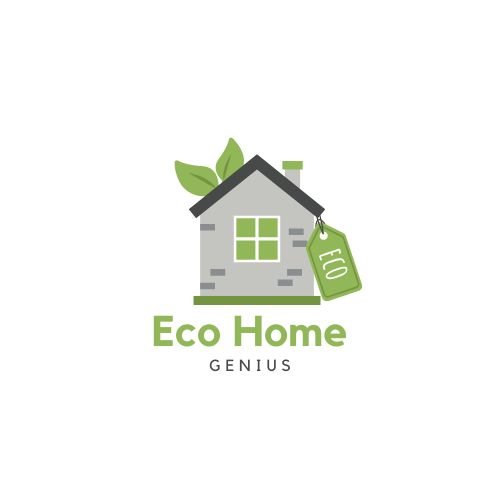

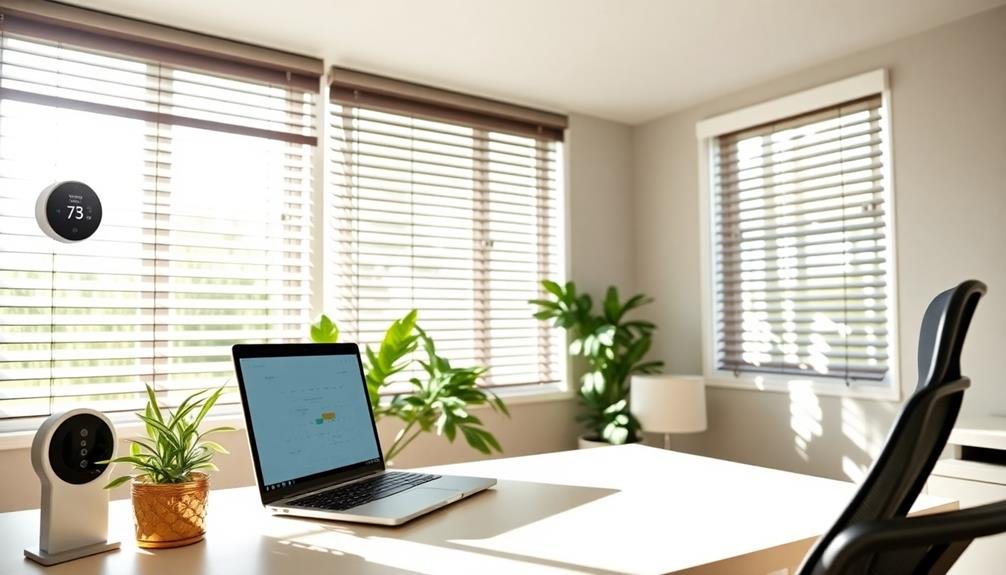
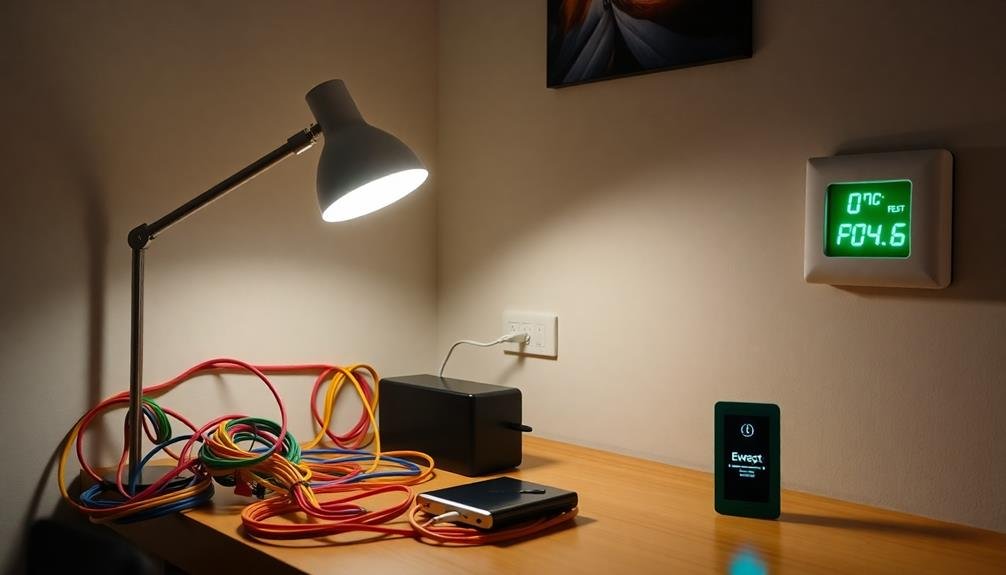
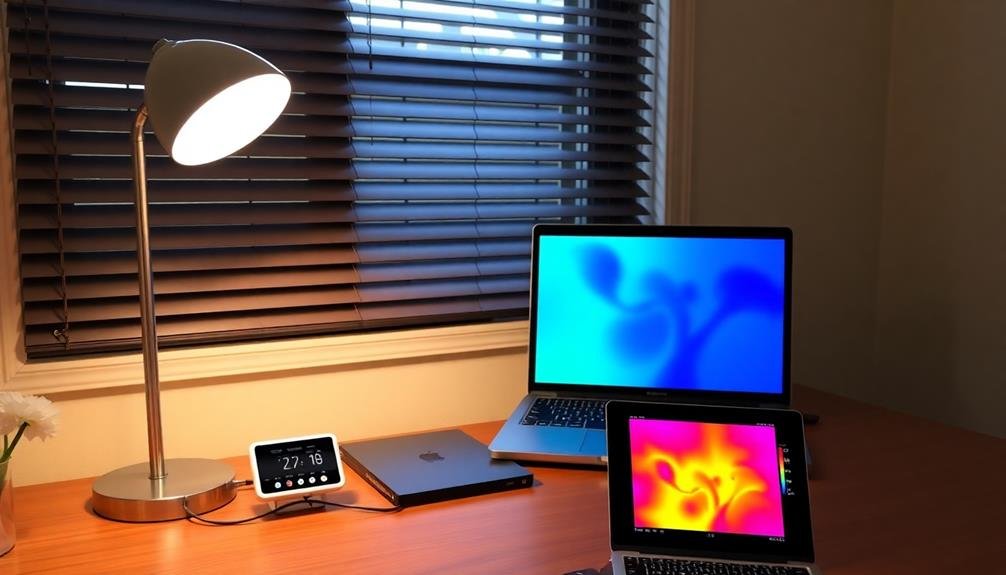
Leave a Reply